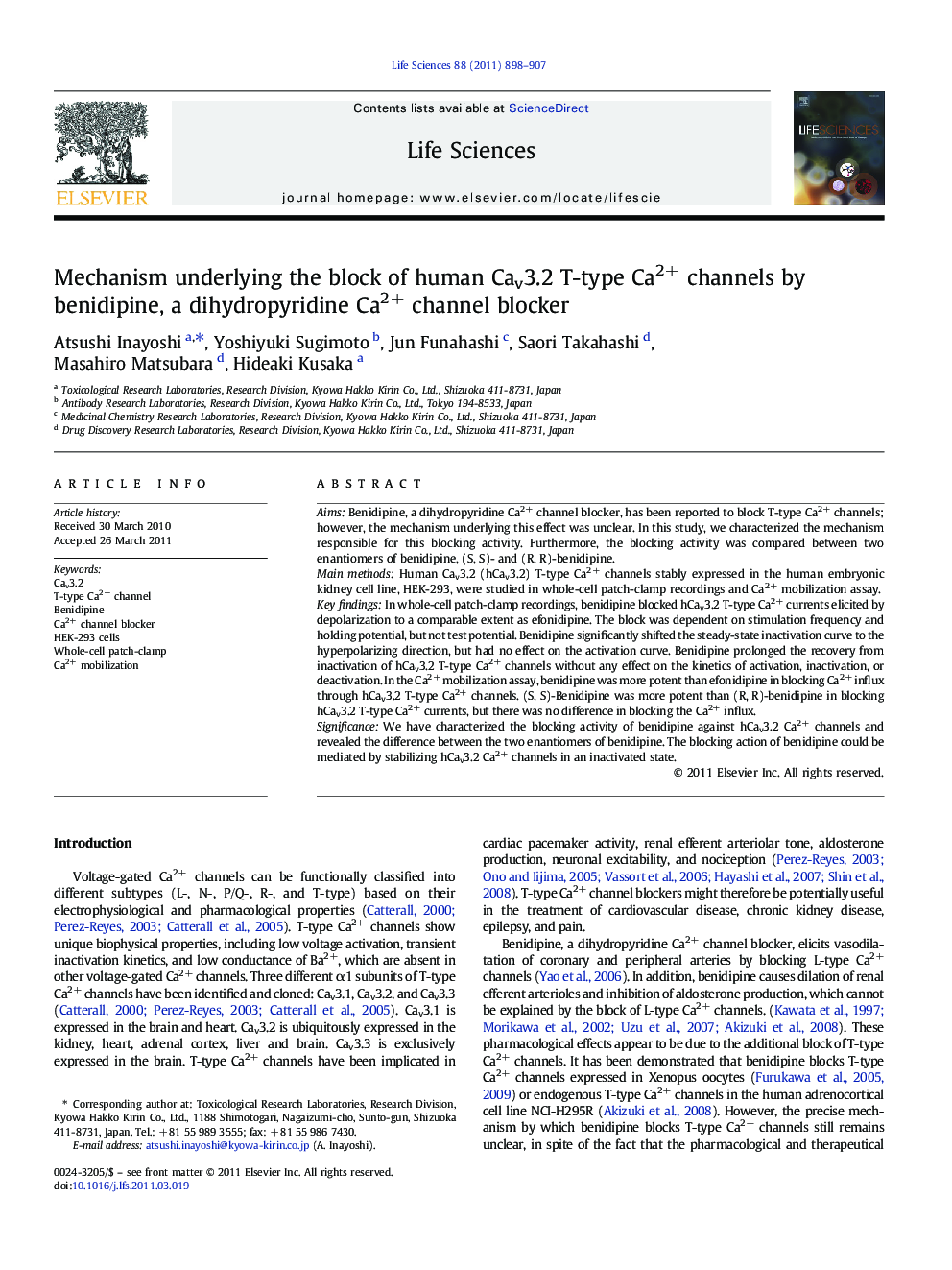| Article ID | Journal | Published Year | Pages | File Type |
|---|---|---|---|---|
| 5842960 | Life Sciences | 2011 | 10 Pages |
AimsBenidipine, a dihydropyridine Ca2+ channel blocker, has been reported to block T-type Ca2+ channels; however, the mechanism underlying this effect was unclear. In this study, we characterized the mechanism responsible for this blocking activity. Furthermore, the blocking activity was compared between two enantiomers of benidipine, (S, S)- and (R, R)-benidipine.Main methodsHuman Cav3.2 (hCav3.2) T-type Ca2+ channels stably expressed in the human embryonic kidney cell line, HEK-293, were studied in whole-cell patch-clamp recordings and Ca2+ mobilization assay.Key findingsIn whole-cell patch-clamp recordings, benidipine blocked hCav3.2 T-type Ca2+ currents elicited by depolarization to a comparable extent as efonidipine. The block was dependent on stimulation frequency and holding potential, but not test potential. Benidipine significantly shifted the steady-state inactivation curve to the hyperpolarizing direction, but had no effect on the activation curve. Benidipine prolonged the recovery from inactivation of hCav3.2 T-type Ca2+ channels without any effect on the kinetics of activation, inactivation, or deactivation. In the Ca2+ mobilization assay, benidipine was more potent than efonidipine in blocking Ca2+ influx through hCav3.2 T-type Ca2+ channels. (S, S)-Benidipine was more potent than (R, R)-benidipine in blocking hCav3.2 T-type Ca2+ currents, but there was no difference in blocking the Ca2+ influx.SignificanceWe have characterized the blocking activity of benidipine against hCav3.2 Ca2+ channels and revealed the difference between the two enantiomers of benidipine. The blocking action of benidipine could be mediated by stabilizing hCav3.2 Ca2+ channels in an inactivated state.
